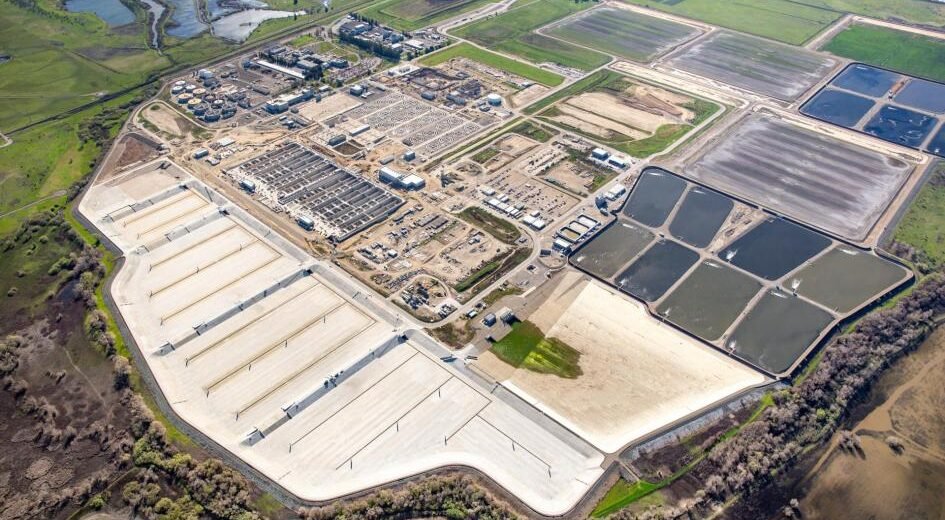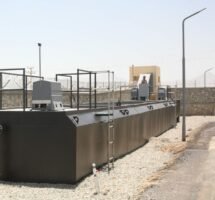Sacramento Regional Wastewater Treatment Plant

Sacramento Regional Wastewater Treatment Plant: An In-depth Look at How It Works
The Sacramento Regional Wastewater Treatment Plant is a crucial facility that plays a vital role in protecting public health and the environment in the Sacramento region. This state-of-the-art treatment plant is responsible for treating wastewater from homes, businesses, and industries in the area before releasing it back into the environment. In this article, we will take an in-depth look at how the Sacramento Regional Wastewater Treatment Plant works, the processes involved, and the importance of wastewater treatment for the community.
History and Overview of the Sacramento Regional Wastewater Treatment Plant
The Sacramento Regional Wastewater Treatment Plant, also known as the Sacramento Regional County Sanitation District (Regional San) treatment plant, is located in Elk Grove, California. The plant is one of the largest wastewater treatment plants in the Western United States and serves over 1.4 million residents in the Sacramento region.
The plant was first built in the early 1940s and has since undergone several expansions and upgrades to meet the growing population and stricter environmental regulations. The plant is operated by the Sacramento Regional County Sanitation District and is responsible for treating an average of 181 million gallons of wastewater per day.
The Importance of Wastewater Treatment
Wastewater treatment is a crucial process that helps protect public health and the environment by removing harmful pollutants and contaminants from wastewater before it is discharged back into rivers, lakes, and oceans. Untreated wastewater contains a variety of pollutants, including bacteria, viruses, heavy metals, and chemicals, which can be harmful to human health and aquatic ecosystems if released untreated.
Wastewater treatment plants use a combination of physical, chemical, and biological processes to remove pollutants from wastewater and ensure that it meets strict water quality standards before being discharged back into the environment. By treating wastewater, treatment plants help prevent waterborne diseases, protect aquatic life, and maintain the health of our waterways.
Treatment Processes at the Sacramento Regional Wastewater Treatment Plant
The Sacramento Regional Wastewater Treatment Plant uses a multi-step treatment process to remove pollutants from wastewater and produce clean water that meets state and federal water quality standards. The treatment processes at the plant include primary treatment, secondary treatment, and tertiary treatment.
1. Primary Treatment: The primary treatment process involves the removal of large solids and debris from the wastewater through physical processes such as screening and sedimentation. In this stage, wastewater flows through screens to remove large objects and then enters settling tanks where solid particles settle to the bottom. The settled solids, known as sludge, are removed and processed separately, while the partially treated wastewater moves on to the next stage of treatment.
2. secondary Treatment: The secondary treatment process involves the removal of dissolved and suspended organic matter from the wastewater using biological processes. In this stage, wastewater is aerated and mixed with bacteria and other microorganisms in large tanks known as aeration basins. These microorganisms break down organic matter in the wastewater, converting it into carbon dioxide and water. The treated wastewater then moves on to the next stage of treatment.
3. Tertiary Treatment: The tertiary treatment process is the final step in the treatment process and involves the removal of remaining pollutants and contaminants from the wastewater. This stage may include additional physical, chemical, and biological processes such as filtration, disinfection, and nutrient removal. The goal of tertiary treatment is to produce high-quality effluent that meets strict water quality standards before being discharged back into the environment.
Overall, the treatment processes at the Sacramento Regional Wastewater Treatment Plant are designed to remove a wide range of pollutants from wastewater and produce clean water that is safe for the environment and public health.
Environmental Benefits of Wastewater Treatment
Wastewater treatment plays a crucial role in protecting the environment and maintaining the health of aquatic ecosystems. By removing pollutants from wastewater before it is discharged into rivers, lakes, and oceans, treatment plants help prevent water pollution, protect aquatic life, and maintain the quality of our water resources.
One of the key environmental benefits of wastewater treatment is the prevention of eutrophication, a process in which excessive nutrients in wastewater can lead to algal blooms and oxygen depletion in water bodies. These harmful algal blooms can have negative impacts on aquatic ecosystems, including fish kills, habitat destruction, and the loss of biodiversity. By removing nutrients and other pollutants from wastewater, treatment plants help prevent eutrophication and protect the health of our waterways.
In addition to preventing water pollution, wastewater treatment also helps protect public health by removing harmful pathogens and bacteria from wastewater. Untreated wastewater can contain a variety of disease-causing microorganisms, including bacteria, viruses, and parasites, which can pose serious health risks to humans and wildlife. By treating wastewater before discharge, treatment plants help prevent the spread of waterborne diseases and protect public health.
The Role of the Community in Wastewater Treatment
Wastewater treatment is a shared responsibility that involves the entire community in managing and protecting our water resources. Residents, businesses, and industries all play a role in ensuring that wastewater is properly managed and treated before being discharged into the environment.
One of the key ways that the community can support wastewater treatment is by reducing the amount of pollutants and contaminants that are discharged into the sewer system. This includes properly disposing of household chemicals, pharmaceuticals, and other hazardous materials, as well as reducing water usage and preventing the disposal of solid waste into the sewer system. By reducing the amount of pollutants entering the sewer system, the community can help reduce the burden on wastewater treatment plants and ensure that water quality standards are met.
In addition to reducing pollutants, the community can also support wastewater treatment by promoting water conservation and pollution prevention measures. This includes implementing water-saving practices in homes and businesses, such as fixing leaks, using water-efficient appliances, and landscaping with native plants. By conserving water and reducing pollution, the community can help protect water resources, reduce the cost of wastewater treatment, and promote sustainable water management practices.
Conclusion
The Sacramento Regional Wastewater Treatment Plant plays a crucial role in protecting public health and the environment in the Sacramento region. Through a combination of physical, chemical, and biological processes, the treatment plant removes pollutants from wastewater and produces clean water that meets strict water quality standards. By treating wastewater before discharge, the treatment plant helps prevent water pollution, protect aquatic ecosystems, and maintain the health of our waterways.
Wastewater treatment is a shared responsibility that involves the entire community in managing and protecting our water resources. By reducing pollutants, promoting water conservation, and supporting pollution prevention measures, the community can help ensure that wastewater is properly managed and treated before being discharged into the environment. Together, we can work towards a cleaner, healthier environment for current and future generations.
Sources:
1. Regional San – Sacramento Regional County Sanitation District. https://www.regionalsan.com/
2. Environmental Protection Agency – Wastewater Treatment. https://www.epa.gov/npdes
3. California Water Environment Association. https://www.cwea.org/


